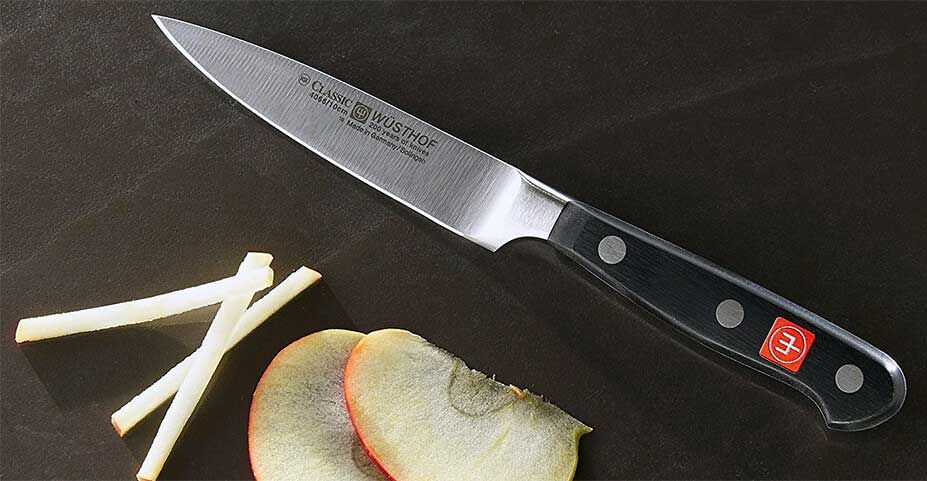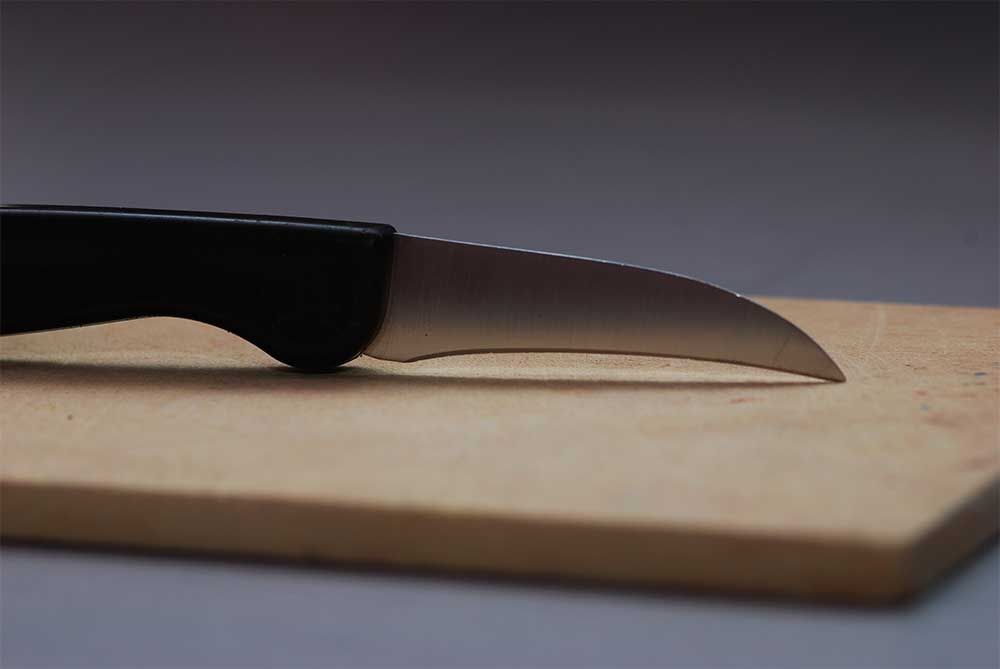Our recommendations are made independently. We may receive commissions from purchases made via our links.
What Is a Paring Knife Used for? Usage Tips for the Home Cooks
Apart from the chef's and utility knife, the paring knife is a must-have in a proper kitchen knife set. What is a paring knife is used for?
A paring knife is one of the most important tools in the kitchen. There are a few popular kinds, but it’s basically just a knife with a smaller blade— between 2 inches and 5 inches long, with most around 3.5 inches. You’ve probably seen them used by chefs on TV, and if you have a decently equipped kitchen, you probably own one yourself. However, if you’re wondering “what is a paring knife used for?” or when to choose a paring knife over other kitchen knives or tools, this guide will help.

What is a Paring Knife Used for? The Quick Answer
- Use it for peeling and slicing small food items like fruits and vegetables.
- Hold the item in one hand and turn it as you cut towards you.
- A standard curved blade around 3.5 inches is your best kitchen friend after the chef’s knife.
- A serrated edge helps with pastries and soft fruits.
- A bird’s beak knife is for removing unwanted bits like seeds and cores, or making designs.
- Keep it sharp with a whetstone or honing rod.
Common Uses for Paring Knives
The advantage of a paring knife is in its small size, which gives you more control to make small, delicate cuts compared to a large chef’s knife. It’s also lighter and easier to hold, so it’s possible to use it in one hand and forego your usual cutting board.
The most common use of a paring knife is to peel the skin and other unwanted bits off of fruits and vegetables. Think oranges, peaches, tomatoes, and onions. Other thick-skinned fruits and vegetables with hard flesh, like cucumbers and potatoes, would benefit more from a peeler, though if you don’t have one on hand then a paring knife is certainly a viable option.
To peel using a paring knife, wrap three or four fingers of your dominant hand around the handle with the blade facing towards you. Hold the fruit or vegetable in your other hand and turn it at a slight angle to the knife to prevent cutting off more meat than skin. You can use your thumb to help hold the fruit or vegetable steady as you cut. If you cut in rings as you turn, it’s actually possible to remove the entire peel in one go!
A paring knife can also be used to extract the core from certain fruits and vegetables (strawberries, tomatoes, peppers) while leaving the rest whole. You can also use it to slice small food items like garlic and shallots before finely chopping them with your chef’s knife. You can remove bits of fat from meat to make it healthier, or slice open a shrimp and take out the vein for a better presentation.
Types of Paring Knives
Paring knives can be categorized in several ways, usually based on the shapes of their edges, beaks, and blades. The most common types of paring knives include:

Curved Blade
Most paring knives will have a slightly backwards-curved blade to give you the most control at the tip and allow you to slice cleanly whether on a board or in your hand. If you’re not sure which kind to go with, this is the best choice due to its versatility.
Bird’s Beak
A bird’s beak paring knife is smaller (2-3 inches) and has a strong inward curve. It is useful for delicate operations like extracting seeds and making precise cuts. It’s quite specialized, but for creating aesthetic decorative foods— think carrot and radish flowers, or bud-free pineapples— there’s no better tool.
Serrated Blade
If you’re cutting a lot of soft food items like pastries, a serrated blade paring knife may be just what you’re looking for. It also works fine for fruits, from soft ones like berries to tough-peeled ones like tomatoes or mangoes.
Size and Materials
3.5 inches is just about right for most paring knives, but feel free to go smaller if you like.
We recommend a firm stainless steel blade. For the handle, you can choose from plastic (cheaper and more hygienic) or wood (more beautiful, but also more expensive). It depends on your budget and what you’re comfortable with.
Paring Knife Usage and Maintenance Tips
The standard way to use a paring knife is to cut towards your body and move your thumb along the piece of food you’re cutting, keeping it out of the way of the knife’s blade. Of course, you can still use a paring knife with a cutting board when the occasion calls for it.
Sharpen your paring knife regularly using just as you would your chef’s knife— a sharpening stone or a honing rod. Sharpening actually decreases the chance of cutting yourself— still a big concern with paring knives— because you don’t have to use as much force, so it’s harder to slip or lose control of the knife.
Just like a chef’s knife, make sure to store your paring knife with the blade facing down in a block or on a magnetic rag, or covered if it’s in your drawer. The last thing you want is to cut yourself right when you’re about to cook!
Did our article answer your question of what is a paring knife used for? Do you know of any other uses for a paring knife? Let us know in the comment section below!





